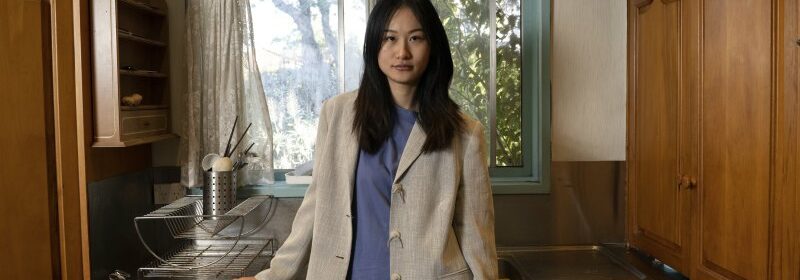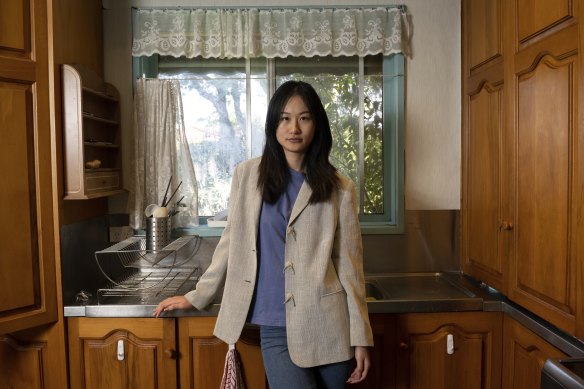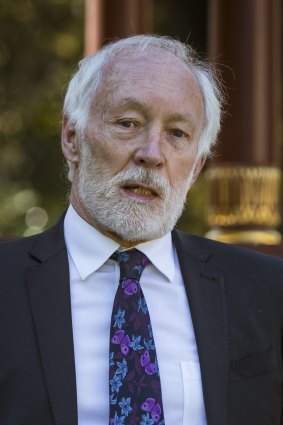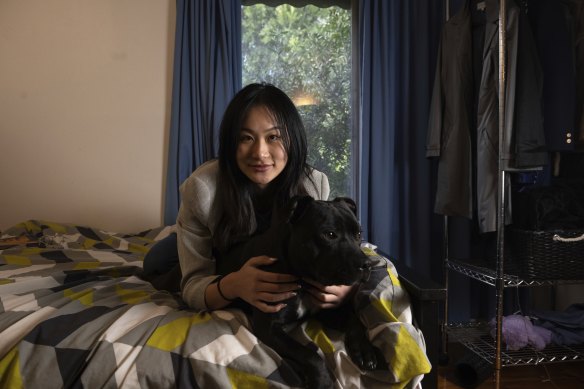‘Something really bad is happening’: Kids more distressed but missing out on help

Save articles for later
Add articles to your saved list and come back to them any time.
More than half the children who try to contact the Kids Helpline are failing to get through, as experts warn the mental health crisis among young people is worsening.
The free service responded to almost 1900 suicide attempts last year, with these cases now making up 37 per cent of all emergency interventions, up from 33 per cent in 2021.
Charlene Peng advocates for youth mental health services while dealing with her own depression.Credit: Penny Stephens
It is calling for an urgent injection of funds from federal and state governments, so it can hire more counsellors to pick up the phones and respond to distressed children online.
“We are seeing increasing numbers of young people facing lots of demands in their lives,” said Tracy Adams, the chief executive of yourtown, the not-for-profit organisation which operates the 24/7 helpline.
The Kids Helpline Impact Report showed the proportion of children unable to connect to a counsellor rose from 50 to 56 per cent in the past year.
Last year, more than 320,000 children tried to contact the confidential helpline. Those who got through cited emotional wellbeing, mental health, family relationships and suicide as their top concerns.
National Children’s Commissioner Anne Hollonds said children were experiencing a “pandemic of mental health conditions”.
“Post-COVID, we seem to be seeing very serious presentations — particularly concerning young children — of self-harm and eating disorders,” she said.
“It’s hard for people to get the help they need, especially for people who rely on public services.”
Two in five young people between 16 and 24 experienced a mental health disorder in 2020-21, up from 26 per cent in 2007, according to the Australian Bureau of Statistics.
Those statistics emerge as new research from the University of NSW reveals an 82 per cent increase in child and adolescent inpatient hospital admissions for self-harm and a 76 per cent hike in emergency department visits for eating disorders during the height of pandemic restrictions; between March 2020 to December 2021. While those presentations dropped slightly after restrictions eased, the study found they remained higher than pre-pandemic levels.
Orygen executive director Pat McGorry said 726 young people were currently on a waitlist for treatment at Headspace centres in Melbourne’s north-west.
Orygen executive director Pat McGorry.Credit: Chris Hopkins
“There is something really bad happening to the mental health of young people in high-income countries,” he said. “Everyone wants to blame social media, but it is not just social media; there is something more going on.”
He said young people felt pessimistic about the future, and the pandemic had disrupted their education and social lives.
“They are concerned about climate change,” he said. “There has been a casualisation of the workforce, they come out of uni with huge debts, they can’t buy a house, they are under extreme pressure.”
Australian Association of Psychologists director Carly Dober said many families were in a desperate situation and unable to afford or access help.
“It’s pretty alarming,” she said.
She said many children were keeping their mental health struggles to themselves because they did not want to burden their parents, who were stressed due to rising living costs. She said some children were picking up extra work to help make ends meet.
“They are working more hours in McDonalds or Kmart. They’re trying to give some money to their parents,” she said.
Charlene Peng would like schools to teach students how to spot signs of mental illness. Credit: Penny Stephens
Charlene Peng says she was a social student before withdrawing from her friends at the age of 17 and spending days in her room with the curtains drawn. Now 24, she’s a young health ambassador for the Youth Affairs Council of Victoria.
“I didn’t want to go outside,” she recalls. “Every day was a big struggle.”
Peng engaged in self-harm, always felt angry and found it difficult to study.
But it wasn’t until she started university that she realised she needed help. After a four-month wait to see a psychologist, she had a diagnosis: depression, bipolar disorder and borderline personality disorder.
“I felt released,” she said of her diagnosis.
Peng is now in a better place thanks to regular sessions with a psychologist and medication. But she is concerned that many young people give up on mental health support because of the lengthy wait times for help.
“It’s easy for people to get cold feet,” she said. “A person has to be very brave to face their problems – they are already struggling with themselves, their life, their relationships – they shouldn’t have to struggle with the thing that should be helping them.”
Federal Health Minister Mark Butler said he was concerned about the shortage of Kids Helpline counsellors.
“The government will continue to engage with Kids Helpline to support their important work,” he said.
“Since 2018-19, Kids Helpline has received a total of $21.7 million in core funding, and $9.6 million in additional COVID-specific support.”
The Victorian government provided $750,000 to Kids Helpline this financial year, while the NSW government committed $17 million to the helpline over four years.
A Victorian government spokeswoman said it had embarked on the biggest reform of a mental health system in Australia’s history. “Whether it’s walk-in, community-based care or acute hospital treatment, we’re making seeking treatment more accessible for every young Victorian,” she said.
Kids Helpline: 1800 55 1800; Lifeline: 13 11 14
Make the most of your health, relationships, fitness and nutrition with our Live Well newsletter. Get it in your inbox every Monday.
Most Viewed in National
From our partners
Source: Read Full Article


